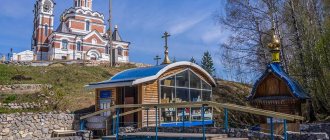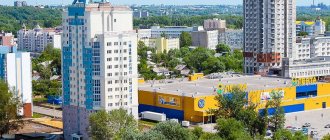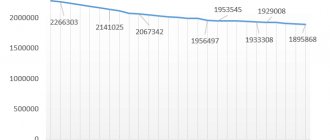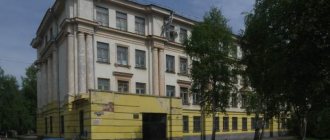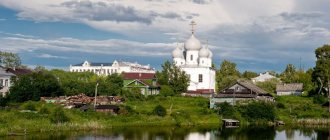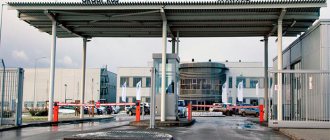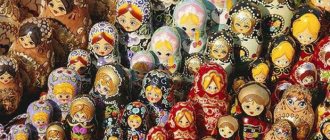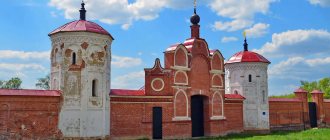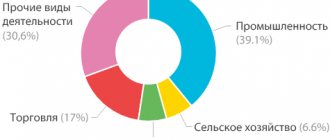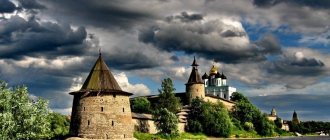In the southern part of the West Siberian Plain, the Kurgan region is located - one of the constituent entities of the Russian Federation. It occupies a flat territory with a total area of more than 70 km2. On the satellite map of the Kurgan region you can see the areas bordering this region:
- Chelyabinskaya;
- Tyumen;
- Sverdlovskaya;
- Kostanayskaya (Kazakhstan).
The region has an elongated shape along the Kazakhstan border. About 500 large and small rivers and streams flow through its territory. On the map of the Kurgan region by district, you can examine in detail the entire hydrographic network of the region, which belongs to the Tobolsk basin.
Of particular interest are the numerous lakes in the region, which are formed by flat lowlands (saucers). The total number of reservoirs is close to 3000. Most of the lakes consist of fresh water, but there are also salty reservoirs, the level of salt concentration in which is equal to the reservoirs of the best health resorts and resorts in the country.
Significant lakes, which can be seen on a map of the Kurgan region with diagrams:
- Eadgilds;
- Manyass;
- Okunevskoe
- Black;
- Half.
The healing lake in the region is Medvezhye. At its bottom, sulfide muds were found, which are used in the treatment of joint diseases and skin problems. In terms of its properties, Bear Lake is equated to the Dead Sea.
Looking at the areas on the map of the Kurgan region, you can find many interesting places, resorts, large and small cities, and settlements.
What holiday is it today?
January 22, 2022, Saturday
Today are holidays, events: Day of Unification of Ukraine Tomorrow: Premiere of the opera “Eugene Onegin” at the Bolshoi Theater
Today is the Orthodox holiday: Martyr Polyeuctus. St. Philip, Metropolitan of Moscow and All Russia, wonderworker... Tomorrow: St. Gregory, Bishop of Nyssa. Venerable Markian the presbyter. Venerable Dometian, Bishop of Melitino. St. Paul of Komel, wonderworker, student of St. Sergius of Radonezh. Saint Theophan, the Recluse of Vyshensky...
Today is a national holiday: St. Philip's Day... Tomorrow: Gregory - Summer Guide...
Seasons
Seasons, four periods of the year (spring, summer, autumn and winter) characterized by certain average temperatures. The period during which the Sun passes through one of these sectors is called the season. Spring in the Northern Hemisphere and autumn in the Southern Hemisphere begin when the Sun passes through the initial circle of declination and its right ascension is 0° (vernal equinox). Summer in the Northern Hemisphere and winter in the Southern Hemisphere occur when the sun's right ascension is 90° (summer solstice). Autumn in the Northern Hemisphere and spring in the Southern Hemisphere begin when the sun's right ascension is 180° (autumnal equinox). The beginning of winter in the Northern Hemisphere and summer in the Southern Hemisphere is considered to be the winter solstice, when the direct ascension of the Sun is 270°... Next: Seasons. Russian folk calendar. Monthly words...
Kurgan State Drama Theater
Kurgan Drama Theater
Mound
The history of the Kurgan Drama Theater began in 1943. The first rehearsals took place on the stage of a theater in the neighboring city of Shadrinsk. The artistic directors were Konstantin Stepanov-Kolosov and Alexander Kanin. Later, the troupe moved to Kurgan, where they were given the building of the former Alexander Girls' Gymnasium. In the spring of 1953, the regional theater moved to the former People's House, which was specially restored for artists.
For the opening of the new building, the actors prepared the play “Jackals” based on the play by Anatoly Yakobson. From 1956 to 1965, the theater was led by Honored Artist of the RSFSR Lazar Meyerson. The audience's favorite productions were his “Egor Bulychev and Others,” “Khanuma” and “Ermak.” Famous actors also came here to play: Georgy Menglet and Yuri Yakovlev, Andrei Mironov and Vera Vasilyeva, Yuri Solomin and Andrei Myagkov.
Today, the Kurgan Drama Theater is reviving the forgotten traditions of Russian provincial theater. On its stage you can see actors' benefit performances, comedies, musicals and productions by modern directors: Victor Antipin, Alexander Gorban, Daniil Beznosov, Dmitry Akrish and others.
Folk calendar about every day
Every day one season always replaces another and this determines a person’s way of life. In connection with this, a folk calendar was formed in which there were practically no nameless, unmarked days. Every day was special, had its own purpose. All this was determined by climate conditions and astrological phenomena.
A calendar is a system for counting periods of time. The first calendars arose a long time ago, in ancient times, because there was a need to measure time. The word calendar comes from the Latin words caleo - to proclaim and calendarium - debt book. This is due to the fact that in Ancient Rome the beginning of each month was especially proclaimed, and because it was customary to pay debts on the first day of the month. Different peoples counted time differently. Some calendars are based on the changing phases of the moon - lunar calendars; in others - the change of seasons - sunny; in others, the length of the year was coordinated with the change of seasons, and the counting of months was associated with the phases of the Moon. Such calendars are called lunisolar.
In Rus', the calendar was called a monthly calendar. Every day, the month book covered the entire year of peasant life, “describing” day by day, month after month, where each day had its own holidays or weekdays, customs and superstitions, traditions and rituals, natural signs and phenomena. The cyclical nature of the calendar is reminiscent of human life, where spring is youth, summer is heyday, autumn is the time of harvesting fruits (it’s good if there are some, otherwise you can live your life without collecting fruits), winter is the time of wisdom and peace. This cyclicality and rhythm determined the way of life of the farmer. The folk calendar was an agricultural calendar, which was reflected in the names of the months, folk signs, rituals and customs. Even the determination of the timing and duration of the seasons is associated with real climatic conditions. Hence the discrepancy between the names of the months in different areas... Next: Folk calendar...
Travel tips
Kurgan is worth visiting in the warm season - from May to September. Although in mid-summer it is quite hot here, so tourists who do not like heat should come in May or early autumn. In winter, the city is quite cold and windy.
You can explore the main attractions of Kurgan in one or two days. All of them are located in the central part of the city, so the excursion will be quite compact. In addition, most hotels are also located in close proximity to the city center, so you can move around Kurgan on foot. Public transport here is not very developed - it is represented only by minibuses, however, they can easily take you anywhere in the city.
You can buy locally produced birch bark products in souvenir shops in the city.
There are no special souvenir products in Kurgan. Most often, travelers purchase birch bark products as gifts for loved ones. The choice is quite large, you can find everything from magnets to flasks.
Fishing calendar for every day
The fishing calendar should not be taken as an absolutely indisputable truth. Fish biting is greatly influenced by a whole range of natural factors, as well as the influence on the nature of man himself. You must not forget that the fish’s bite depends and is determined not only by the calendar dates and biological cycles of their life, reflected in the calendar, but also, no less, by the state of their habitat; the bite also depends on weather conditions: air and water temperatures, cloudiness, wind direction and strength, etc... Next: Fishing calendar...
What to see if you come with a child
The child will be interested in visiting the local Gulliver puppet theater. It began its work in the middle of the twentieth century, becoming one of the first such establishments in Russia. The performances here are quite diverse, based on both Russian and foreign fairy tales. There are performances for both very young spectators and adults.
Address: Sovetskaya street, house 104. Opening hours: daily, closed on Monday. Performances start: 11.00, 13.00 and 18.30. Ticket price: from 400 rubles.
There is also a Children's Railway for young travelers in Kurgan. The train departs from a special railway station, makes several stops, and passes through the central park, the banks of the Tobol River and the bridge. The length of the Children's Road is one and a half kilometers. The duties of a conductor, guide and assistant driver are performed by high school students.
Kurgan Children's Railway opened on August 13, 1989
Address: Kareltseva street, building 13. Opening hours: 10.00–21.00, Monday and Tuesday are days off. Cost of the trip: children - 50 rubles, adults - 100 rubles.
15 kilometers from Kurgan there is a small petting zoo “Forest Fairy Tale”, best known as the “Ostrich Farm”. Here the child will be able to look not only at ostriches - the main inhabitants of the farm, but also other animals, including: raccoons, rabbits, meerkats, peacocks, owls, ducks, piglets.
On the territory of the farm, you can have a great rest in nature by renting a cottage in a picturesque location
Address: Kurgan region, Ketovsky district, cottage village Roshchino. Opening hours: 10.00–19.00. Cost of visiting: children under 3 years old - free, children from 3 to 9 years old - 100 rubles, children from 10 years old and adults - 200 rubles.
Orthodox calendar about every day
Orthodox calendar: Orthodox, Church and Christian holidays.
The church year is an alternation of weekdays and holidays. On weekdays, a person is called to work “by the sweat of his brow to earn his bread.” Holidays are given in order to feel liberation, to rise above the bustle and routine of the world, to feel involved in the highest of worlds, “where there are no illnesses, sorrows and sighs, but endless life.” Since ancient times, holiday cycles have been associated with the seasons. The pagans associated them with the worship of the forces of nature, the cult of which in the Old Testament was replaced by gratitude to the Creator for the universe. And although the connection between holidays and the seasons has not completely lost its power, since God is present in everything, in the plant and animal world, in human works, it nevertheless faded into the background, giving way to a spiritual foundation built on the Sacred Scriptures. The history of Orthodox holidays dates back to the times of the Old Testament. Each of the Orthodox holidays is dedicated to the remembrance of the most important events in the life of Jesus Christ and the Mother of God, as well as the memory of saints... Next: Orthodox calendar...
Aviation Museum
Aviation Museum
Mound
The Kurgan Aviation Museum was founded in 1985. Here they talk about the history of aviation in the Trans-Ural region from 1912 to 2000. Among the exhibits are documents, photographs, awards and pilot uniforms.
In total, the exhibition of aviation equipment includes 15 aircraft, including various fighters: interceptors, bombers, attack aircraft. Also presented are models of aircraft on which employees of defense companies worked: Aviakhim, Osaviakhim, DOSAAF, ROSTO. In the fuselage of the Il-14T transport aircraft there is an exhibition of crew uniforms and equipment. During the sightseeing tour, visitors are told how the main types of aircraft are constructed and how experienced aviators fly the planes.
Russian folk calendar for every day
The word “sign” comes from the word “notice”, i.e. observe. As a result of observing what happens around a person every day, he accumulates life experience. This knowledge was passed down from generation to generation, carefully preserved and people trusted it as a sacred book. Many signs have come to us from the depths of centuries without losing their knowledge. Each of us is free to choose: to dismiss all this as an absurd superstition or to take a closer look at the signs and take the centuries-old experience of generations more seriously. Most of us, when taking exams, ask them to scold them, boasting about some kind of good fortune or luck, spit so as not to jinx them or knock on wood, take a detour if a black cat crossed the road, are afraid of the number 13 and much more. And who among us does not have lucky things, numbers? Who has never resorted to the help of fate at least once in their life, who has not believed in secrets? It’s as if everything connected with signs is hidden somewhere deep in our subconscious. Often we remember them mechanically, unconsciously, or just as a joke. But, undoubtedly, the signs contain a lot of accurate knowledge and practical wisdom of our ancestors. They cover all the characteristic, often difficult to perceive, natural phenomena. Signs have preserved a lot of what was in old folk holidays and customs; they help predict the weather, grow crops... Next: Folk signs...
Cities of Kurgan region
Kurgan (population: 325.5 thousand people) is the main city of the region. Founded in the second half of the 17th century on the Tobol River, the date of its foundation is still the subject of debate among scientists. But it is known for sure that Kurgan received the status of a city in 1782 by decree of Empress Catherine II. Kurgan became a major industrial center of the Trans-Urals. Enterprises of mechanical engineering, chemical industry, metallurgy and other industries operate here. All this has a terrible impact on the ecology of the city. For this reason, and also because of the old, crumbling infrastructure, the high level of crime and the lack of prospects for the younger generation, Kurgan is one of the least livable cities in Russia.
Shadrinsk is the second largest city in the Kurgan region (population 77,407 people). Founded in 1662 by Russian explorers. Shadrinsky district was agricultural and supplied the entire Urals with bread. In the 19th century, the city became a center of trade and small business. Handicraft production flourished here, and the first porcelain factory in the Urals operated for a long time.
During the years of industrialization, an iron foundry, a mechanical plant and a food processing plant were built here. Today, many enterprises of various profiles operate here. Among the largest are the Shadrinsky Automotive Aggregate Plant, the largest manufacturer of radiators for cars, as well as the Shadrinsky Milk and Canning Plant, part of the Unimilk holding. These two enterprises provide 70% of the industrial output of Shadrinsk.
Not far from the city there is the Shadrinskoye mineral water deposit, which is unique in the Ural Federal District. One of the city’s problems is the tense environmental situation caused by the work of industrial enterprises, oil depots and the abundance of vehicles.
Holiday calendar, dates and events of the year
All state and professional holidays in Russia, including significant World and International holidays, and other equally interesting holidays and events about every day.
The holiday has always kept pace with the history of mankind. Social time can be divided into three types: everyday life (weekdays), weekends and holidays. Everyday life is a series of practices repeated day after day and every day (work). Weekends are regular breaks from the rush of everyday life. It is believed that on weekends a person should restore his strength after working days. Day off, non-working day. A holiday is a day of celebration established in honor or in memory of someone or something. A day or series of days celebrated by the church in memory of a religious event or saint... Next: Calendar...
Links
Articles
: Coat of arms | Anthem | History | Population | Territorial division | Flag
See what “Territorial division of the Kurgan region” is in other dictionaries:
Administrative-territorial division of the Kurgan region - According to the Law of the Kurgan Region dated December 27, 2007 N 316 “On the administrative-territorial structure of the Kurgan region”, [1] the following administrative-territorial units were formed in the Kurgan region: 24 municipal ... Wikipedia
Prayer book, Orthodox prayers for every day
Prayer is the most powerful means for healing all illnesses - both physical and mental. Prayers can be laudatory or grateful, petitionary and repentant. If we have offended God, sinned, we must ask Him for forgiveness, that is, repent. Such prayers are called repentant prayers. If everything is fine with us, if we and our loved ones are healthy and prosperous, if we have a place to live, something to wear, something to eat, we must glorify and thank God for this. Such prayers are called praise or thanksgiving. If some misfortune, illness, trouble or need happens, you need to ask God for help. Such prayers are called petitionary... Next: Orthodox prayers...
Zodiac, astrological, eastern calendar. Zodiac signs
In ancient times, to establish the calendar, priests used knowledge of the positions of all the planets. Before the reform of Peter 1, the New Year was celebrated on the Day of the Autumn Equinox. On this day, according to ancient legend, the most peaceful treaty was concluded between the Great Race (ancient Slavs) and the Great Dragon (ancient Chinese) and it was approximately 7518 years ago... For the ancient Slavs, the calendar month corresponded to the lunar cycle from new moon to new moon, taking into account such Thus, the relationship of the entire annual cycle with astronomical and natural phenomena. There was no coherent calendar system. The main natural phenomena are still considered to this day to be the days of the solar equinox and solstice - the Slavic holidays Maslenitsa, Kupala, Ovsen and Kolyada. But during the time of Peter 1, all ancient Slavic calendars were abolished and a new Western European calendar from the Nativity of Christ (Julian calendar) was introduced, while the beginning of the calendar was moved to January 1. The Julian calendar (old style) did not take leap days into account and accumulated one extra day every 128 years. After the October Revolution in 1918, the Gregorian calendar (new style) was introduced in Russia, according to which an amendment of 13 days was introduced. The calendar of the ancient Slavs was based on two planets: the Sun and the Moon. And now they don’t use anything at all. The calendar has become static. There is no such thing as the calendar, it turns out, resting on some planet. Nobody even knows about it. There are just some standard numbers, there are months and holidays. The calendar is based on the Sun and Moon. Why is this so? Because these two luminaries influence the Earth. The Earth revolves around the Sun, and the Moon revolves around the Earth. And these two luminaries create the atmosphere on the planet. From here the calendar is built... Next: Astrological calendar...
Mound
Video: Kurgan
Basic moments
The city received its name from prehistoric burial mounds - mounds, towering on the high bank of the Tobol River. Originating as a small settlement, the village initially served as a fortress that repelled attacks by nomads. Then the expanded provincial town became the county capital, and in the last century it turned into a large industrial center.
Kurgan's merchant past is preserved by wooden mansions, whose appearance sharply contrasts with the surrounding concrete buildings. Among the important historical attractions are ancient houses where participants in the December 1825 uprising, exiled here, found shelter in the 30s of the 19th century. In one of these estates there is the Museum of the Decembrists, which is definitely worth a visit to all guests of the city. Other museums of Kurgan are also interesting - historical, local history, and art.
There are theaters, cinemas, and exhibition centers in the city. Guests are accommodated in hotels, mainly three-star ones, as well as apartments and hostels. In Kurgan you can find quite decent restaurants, bars, and night entertainment venues.
History of Kurgan
The history of Kurgan dates back to the 17th century. The official date of its foundation is considered to be 1679, but perhaps the first settlement on the site of the city arose several decades earlier. Archival documents connect the emergence of a settlement on the steep bank of the Tobol with the name of the Tyumen peasant Timofey Nevezhin. He cut down the first hut here and, by order of the Tobolsk governor, began to attract “willing people” to the settlement.
The settlement was called Tsarev Settlement, indicating its location in the name: near the Tsarev Kurgan, the largest of the grave mounds grouped in this area. Historians attribute the appearance of burial grounds to the Bronze Age and the Early Iron Age.
Many legends were associated with the mounds. Some of them claimed that treasures were hidden underground. Enthusiasts first decided to check whether this was true in the first half of the 18th century by excavating the top of the Tsarev Kurgan. Having discovered nothing, but having destroyed the embankment cone during the work, they forgot about the failed venture at the official level. However, local tomb robbers did not give up hope of finding the treasure; they repeatedly opened the mounds and dug up layers of earth along with their contents. In the future, this significantly complicated the work of archaeologists. In the middle of the last century, thorough excavations of the Tsarev Kurgan were carried out. But the small artifacts found, which clearly did not correspond to the scale of the work, caused disappointment among scientists. Soon the mounds were completely razed, and neighborhoods were built in their place, where families of energy workers settled.
At the turn of the 17th-18th centuries, Tsarevo Settlement was moved 8.5 km downstream of the Tobol due to one of the mounds sliding into the river. A wooden fortress was built in a new place, which became part of the defensive line that protected the lands conquered by the Russians from nomads. Local residents, descendants of settlers, were always ready to take up arms. A significant part of them were white-local Cossacks, a kind of peasants liable for military service. Later the Siberian Dragoon Regiment was stationed here.
In 1738, Tsarevo Settlement began to be called Kurganskaya Sloboda. By the middle of the 18th century, the settlement was surrounded by a triple line of fortifications, and 30% of its inhabitants were service people. At that time, the fortress garrison was the largest in the entire Tobol region. In 1782, according to the decree of Catherine II, the settlement received the status of a city, the district center of the Tobolsk province and a new name - Kurgan. By that time, the fortress had already lost its defensive significance. Now local residents were mainly engaged in agriculture, cattle breeding, and trade. The population was small - about 1000 people, mostly peasants, townspeople, merchants, and retired military personnel.
Even under Peter I, the first exiles appeared in Tsarev Settlement, and in 1830, 13 Decembrist officers were sent to settle in Kurgan. Some settled here with their families. With their arrival, social and cultural life in the city revived. These active, educated people were engaged in education and charity, leaving a good memory of themselves. In the 60s, the population of Kurgan was replenished with almost a hundred exiled Poles.
In 1893, a new section of the Trans-Siberian Railway was opened, connecting Chelyabinsk and Tyumen. Trains passed through Kurgan. From that time on, the city began to develop rapidly, and local businessmen began to have foreign competitors. The Danes, for example, energetically began producing and exporting Siberian butter, meat, and sausages to Europe. Before the outbreak of the First World War, about 50 businesses operated in the city, and its population reached almost 40,000 people. Kurgan had its own gymnasiums, vocational schools, a theater, a circus, a cinema, and a photo studio.
During the Civil War, the city changed hands more than once, until Soviet power was finally established here in 1919. The industrial revival of Kurgan began a few years later. The economy also actively developed during the Great Patriotic War, when the rear city received enterprises that produced defense, engineering, and food products evacuated from the western regions of the USSR.
Military schools and an aviation school were stationed in Kurgan; military units and formations were formed, including the 32nd reserve ski regiment of the “white devils,” as the Nazis called these warriors. Military hospitals were also located here. One of them was converted into a veterans' hospital after the war. The legendary Gavriil Ilizarov worked there as a traumatologist-orthopedist. In 1950, he invented a unique compression-distraction device for healing bone fractures. The Ilizarov Center, which opened in Kurgan in 1971, is now world famous.
Geography
The mound is located in the basin of the Ishim steppe valley, located on the flat interfluve of the Tobol and Irtysh, in the southern part of the West Siberian Lowland. It is separated from Moscow by 1973 km. The shortest distance to the state border with Kazakhstan is 200 km. Historically, Kurgan developed on the left, high bank of the Tobol, where most of the urban areas are located today. The right bank is low-lying, with flooded hay meadows stretching along it.
Kurgan is divided into 9 districts and three dozen microdistricts. Some of them are just tiny and consist of 1-3 streets, others have formed around train stations. The central district of the city is located near Tobol. Its tributary, the Chernaya River, crosses the northern part of Kurgan, where the prestigious Zaozerny district was built on swampy terrain. Next to it is the Black Lake, favored by fishermen. Pike, perch, carp, and crucian carp are found here. Despite the name of the reservoirs, the water in them has a completely natural blue-blue color, although it cannot be called crystal clear.
Ecology and climate
Kurgan is built up quite chaotically, largely due to the fact that during the war years, evacuated enterprises were integrated into the urban fabric in an emergency manner. An appropriate infrastructure was created around the hastily erected factory buildings. A number of large industrial locations in Kurgan are “built” directly into residential areas. Given the wind pattern, which usually blows from the northwest in winter and from the southwest in summer, in many urban areas the level of air pollution at different times of the year often exceeds the norm. The unfavorable ecological situation is also influenced by the fact that the air masses above the Kurgan located in the basin often stagnate. It is difficult for the coniferous and birch forests spread around the city to cope with their recreational task.
The local climate is close to sharply continental. Winters here are snowy, harsh, and long – up to 5-6 months. The usual temperature for December-February is –20…–15 °C. There are also frosts of 40 degrees, usually extreme cold occurs in January. March brings with it strong gusty winds that blow with varying intensities for about two months.
Spring in Kurgan is very short. It begins in April, and in mid-May the capricious summer begins here. Until the end of August, temperature indicators can vary from week to week, varying on average from +20...+23 °C to +30...+35 °C. The highest temperature on the city streets was recorded in 1952 and was +40.5 °C. In the first half of September it is still quite warm here: +15…+20 °C. Then it gradually gets colder, and by the end of the month the thermometers fluctuate around +6...+9 °C. Winter makes itself felt in the third ten days of October, when the first frosts usually begin.
Sights of Kurgan
The sights of Kurgan are concentrated in the Central region. Its core is the city garden, Lenin, Kuibysheva, Klimova, Sovetskaya streets, where dozens of pre-revolutionary houses are located. A unique architectural symbol of the city is the fire station building with a 27-meter tower, built in the 80s of the 19th century. The fire station is still located here today. The house of the merchant Dunaev is noteworthy - an elegant wooden mansion, richly decorated with carvings. Among the panel boxes on Pushkin Street lies the house of engineer Ostapts, similar to a fairy-tale tower, with narrow high windows and a roof topped with a turret.
In Kurgan you can see houses in which exiled Decembrists from wealthy families lived. The fighters against autocracy, who did not have the means, rented small apartments and outbuildings from local residents, so their “residences” were not preserved. However, the memory of all the revolutionaries exiled to Kurgan is preserved by the Decembrist Museum on Klimov Street. It is located in a house that convicted Colonel Mikhail Naryshkin purchased from a local official and rebuilt to his taste. Contemporaries claimed that it was the most beautiful building in the city.
The Naryshkin family lived in a one-story wooden mansion in the 30s of the 19th century. An exhibition containing more than 2000 exhibits is located in 8 halls. The museum has recreated the interiors of the living room, dining room, library, rooms of the owners and their children. The furniture is interesting, made of mahogany, complemented by elegant bronze, porcelain, and silver items. The descendants of the Decembrists donated memorial items to the museum - books, portraits and personal belongings. The Naryshkin heirs replenished the museum funds with a wonderful collection of clothing of the noble class, elegant tableware, tablecloths and bed linen from Dutch linen from the century before last.
In Kurgan, it is also worth checking out the small Wilhelm Kuchelbecker Museum on Kuibyshev Street. The exiled poet, Pushkin’s friend, lived in this modest wooden house for two years. On Sovetskaya Street there is a beautifully restored house, which became shelter for Baron Andrei Rosen, his wife and children for 4 years. Today it houses a children's art school.
Not far from Kuchelbecker’s house, in a mansion built in 1868, the Kurgan History Museum is located. This building, erected in the style of Russian provincial classicism, is the only stone urban merchant estate of the 19th century preserved in the Kurgan region. Initially, the estate belonged to the merchant of the 1st guild, Semyon Berezin, and then was purchased by the city authorities to house the district treasury.
On the ground floor there is a collection of archival documents, rare photographs of the city of the late 19th – early 20th centuries, pre-revolutionary theatrical costumes and musical instruments are on display. On the second, the interiors of a merchant's house are recreated. Romance evenings are regularly held in the living room, furnished with antique furniture.
The Kurgan Regional Museum of Local Lore (Pushkin St., 137) has a large collection of historical and cultural collections. The exhibition presents archaeological finds, objects and documents related to the development of the region in the pre-revolutionary period. A large section reflects the stages of the Soviet era. One of the halls is dedicated to the nature of the Kurgan region.
An interesting exhibition of aircraft can be viewed at the branch of this museum, at the exhibition site near the local airport. There are 15 aircraft assembled here. Among them are passenger aircraft Il-14, Yak-40, An-24, combat fighters MiG-17, Su-25. The neighboring building displays military pilot uniforms, training equipment, and models of winged aircraft. There is also an exhibition dedicated to sports aviation.
While walking around Kurgan, travelers see many monuments and sculptural compositions built in Soviet times and today. In 2022, an impressive bronze monument to Timofey Nevezhin was erected on the square in front of the railway station. The five-meter figure of the founder of the Kurgan rises on a pedestal of the same height. A remarkable sculpture of a postman with a “Kilometer Zero” signpost is located in front of the main post office. It is located next to the central square of the city, named after Vladimir Lenin. The architectural ensemble of the square, reflecting the traditions of the Leningrad architectural school, was formed in the 50s of the last century. The buildings facing it are built in the Stalinist Empire style.
The main temple of the city is the red-stone Alexander Nevsky Cathedral, built at the turn of the 19th-20th centuries with donations from the Kurgan merchants. It impressively rises above the treetops of the city garden, distinguished by an elegant hipped bell tower with a clock - a rare detail on the façade of Orthodox belfries in the provinces. From the outside, the temple looks compact, although its interior is quite spacious due to the absence of columns and partitions. The interiors of the cathedral look strict and noble.
In 2015, the Epiphany Cathedral was built on Klimova Street, in the bend of Tobol. The architectural appearance of the temple is symbolic. It captures the traditions of Russian church architecture of the 17th-18th centuries - the era of the development of Trans-Ural lands by Russian pioneers and the establishment of Orthodoxy here. The temple is famous for its collection of icons created in the 17th-19th centuries.
Excursions
City travel agencies offer excursions around Kurgan. Those interested can go to the Tsarevo Gorodishche park, located 8 km from the city center. This cultural and historical complex was created in 2013 on the banks of the Tobol. In the park you will get an idea of what the settlement, the predecessor of Kurgan, looked like in the 17th century.
The buildings of the first settlers, a watchtower, and a fragment of a defensive wall have been recreated on the territory. Visitors are invited to try on old clothes, walk around the territory, watch films about Kurgan, and look into the souvenir shop where handicrafts are sold. “Tsarevo Settlement” is a popular place for photo shoots. On holidays, costumed theatrical performances with songs and dances are held here.
40 km from the city, in the wide floodplain valley of Tobol, there is a unique archaeological monument - the Savin sanctuary, which is called the Trans-Ural Stonehenge. Researchers discovered this location on the hill of the same name, surrounded by oxbow lakes. The remains of ancient structures found here date back to the 4th-3rd millennia BC. e. Scientists studying traces of prehistoric buildings indicate that Savin was not only a sanctuary where religious rituals and sacrifices were performed, but also an archaeastronomical observatory for observing the sacred luminaries - the Sun and the Moon. Today, as part of the creation of an open-air museum, a full-size reconstruction of the archaeological site has been almost completed.
The area in which Savin is located is also noteworthy. Residents of the surrounding villages have long been afraid to visit here, fearing evil spirits living among the ancient graves. Here you will be told about strange phenomena occurring on numerous surrounding lakes: oncoming waves, mournful sounds in the night, tattered fishermen’s nets, and so on. A popular theme in local legends is the machinations of mermaids. These evil creatures, according to popular belief, live in almost every body of water.
Entertainment
There is not much entertainment in Kurgan. City dwellers traditionally spend warm days outdoors. A favorite vacation spot is the Central Park of Culture and Leisure, located in the Tobol floodplain. Here guests will find sports grounds, exercise equipment, and attractions - both modern and inherited from Soviet times. A children's railway is laid around the territory. Lovers of silence stroll along the alleys framed by birch, spruce, and rowan trees.
In the very center of Kurgan there is a city garden. This small green corner is decorated with interesting sculptures. Near the Alexander Nevsky Cathedral located here there is a bridge of lovers, hung with locks and other attributes of fidelity. There are playgrounds for children in the garden and several attractions.
To the north of the city, in a pine forest, lies the popular Blue Lakes recreation area. The reservoirs are flooded quarries where sand was previously mined. All of them are connected by wide channels, with the exception of a separate round lake, on the shore of which there is a paid sandy beach. The municipal beach area stretches along the neighboring bay. Both locations are looked after: before the start of the swimming season, the bottom of the reservoirs is cleaned, the sand on the shore is renewed, and the grass in the adjacent areas is mowed.
The water in the lakes warms up quickly. Although the ice here finally disappears only at the end of April, the swimming season already begins in June. It continues until the last days of August. In winter, “Blue Lakes” attracts those who like to swim in the ice hole, and in spring and autumn – those who want to have a picnic in nature. You can get here from Kurgan by car in 20 minutes, by bus or minibus - in 40 minutes. A public transport stop is located a couple of minutes walk from the recreation area.
Back in the 20s of the last century, the massive development of skiing began in Kurgan. Today there are 4 ski centers operating here. Recently, a modern ski base was opened in the village of Uval, where conditions have been created for the training of professional athletes, and trails have been laid for amateurs. Every winter, Kurgan residents have the opportunity to ski outside the city along pre-prepared routes.
In Molodezhny Square there is the Yunost sports complex, which has a large modern ice arena for amateurs and professionals. Ice skating is accompanied here by music and lighting. Night skiing has become very popular lately. Yunost has a fitness room and a cafe.
In the shopping and entertainment center Hiper city (Koli Myagotina St., parents with children will find the Zamania family adventure park. On 2800 m² there is a trampoline center, a climbing wall, playgrounds, and separate rooms for parties. Children are entertained by animators. You can have a snack in a family cafe with European and Russian cuisine.Another popular vacation spot among city residents is the Pushkinsky shopping center (Pushkinskaya St., 25).There is a 3D cinema, a cinema bar, and a playground for children.
parents with children will find the Zamania family adventure park. On 2800 m² there is a trampoline center, a climbing wall, playgrounds, and separate rooms for parties. Children are entertained by animators. You can have a snack in a family cafe with European and Russian cuisine.Another popular vacation spot among city residents is the Pushkinsky shopping center (Pushkinskaya St., 25).There is a 3D cinema, a cinema bar, and a playground for children.
In the evening you can go to the cultural center (Koli Myagotina St., 100). Fans of nightlife will not find a better place in Kurgan! Visitors can enjoy a disco hall, bowling alley, billiards, hookah bar, and restaurant. The establishment is open from 21:00 to 06:00.
Souvenirs
Souvenir shops in Kurgan mainly feature products made from wicker and birch bark. A variety of products are traditionally made from this flexible material in the city - from elegant chests, caskets, cups, flasks to furniture.
A popular souvenir is textile dolls, which are soft amulets with barely drawn facial features. The pottery is also very nice, and there are unusual ceramic items: horseshoes for luck, coins. Specialty stores sell carpets woven in one or two colors, according to local traditions.
As edible gifts, delicious dried peled (this fish is called “cheese”) and a variety of meat products are brought from Kurgan. Local beer "Gampl" is popular.
Cafes and restaurants
Culinary establishments in Kurgan are represented by restaurants, pizzerias, pubs, and sushi bars. Russian, European, and Caucasian cuisine predominates in restaurants. The average cost of a dinner, including an appetizer, main course and a glass of wine, will be 1000-1200 rubles per person. In a pub, you will spend 800-900 rubles for a meal accompanied by a couple of glasses of beer.
Delicious lunches await guests at the Well-Fed Barin, one of the most popular restaurants in Kurgan. The establishment is located in the city center, in the building of the entertainment and hotel complex "Academy". In addition to the large hall, there is a stylishly decorated Old Russian Hall, an Antique Salon, a Knight's Hall, and an open summer veranda. Inexpensive breakfasts are served from 07:00 to 10:00; for a business lunch (290 rubles) come between 12:00 and 16:00. You can have a modest snack here for 500-600 rubles per person, but the cost of the main dishes for a banquet is 700-900 rubles.
The restaurants “Gosti” (6 Pichugina St.), Dolce Familia (Sovetskaya St., 123), and “Yesenin” (K. Marx St., 58-B) offer good cuisine and a comfortable atmosphere. Fans of Japanese gastronomy can go to the Yamato restaurant, which is located near the Alexander Nevsky Cathedral. In the stylish tavern “Santa Fe” (Sovetskaya St., 73), you can have a bite to eat Mexican cuisine.
Fast food in Kurgan is represented mainly by pancakes. In local pancake shops they are offered, on average, for 150-200 rubles.
Where to stay
The hospitality industry in Kurgan is well developed. There are 13 hotels built in the city, as well as dozens of mini-hotels and private apartments.
In the building of the former cultural center of the Stalin era, the Academy Hotel is located (Myagotina St., 100). The façade is distinguished by an elegant neoclassical portico, and the high vestibule is decorated with stucco decoration. There are 48 spacious rooms to choose from, from budget to luxury. There is a restaurant serving original cuisine on the ground floor. Guests can enjoy the fitness center with jacuzzi. Daily accommodation will cost 2662-3270 rubles. "Academy" is located in the center, the main attractions of Kurgan, shops, cafes and restaurants are within walking distance.
Hotel "Cosmos" is located on Gagarina Street, 41-B. The rooms have air conditioning and refrigerators. Suites have minibars. Guests have access to a restaurant and a sauna. The hotel building is located 3 km from the airport. Next door is an exhibition site for aviation equipment from previous years. It is a convenient place to stay for travelers planning an early flight, but it is a bit far from the city center. The price range for accommodation is 4329-7139 rubles. Breakfast is included (buffet).
On the western outskirts of the city, near the Oryol Reservoir, the Kurgan Hotel was built (52 Constitution Avenue). Here you can rent inexpensive rooms, from 880 rubles per day. Nearby there is a wonderful place for walking - the Tsarevo Settlement Park.
Those traveling with a small group will find it convenient to stay in an apartment, paying 1200-1500 rubles. You can spend the night in a hostel for 500 rubles.
Booking.com
Transport
Urban transport in Kurgan is represented by buses and minibuses, and there is a taxi service. The trolleybus lines that recently existed on the streets have been eliminated.
All the city's attractions can be explored on foot or by renting a bicycle. The local company offers bike rentals.
How to get there
Kurgan is connected by regular flights to Moscow. Planes depart from Vnukovo Airport, the flight lasts 3 hours. Kurgan Airport is located 6 km northeast of the city center at the address: st. Gagarina, 41. From here buses No. 5, 73, 325, 378, 403 run to the central blocks.
Trains Moscow – Kurgan depart from the platforms of the Kursk and Kazan stations of the capital. Travel time – 34 hours 46 minutes. In addition, trains traveling on the route Petropavlovsk - Moscow and Petropavlovsk - St. Petersburg stop at the city railway station.
In the schedule of the Kurgan bus station (Sobanina Square, 1), you will find intercity flights to Yekaterinburg, Tyumen, Ufa, Chelyabinsk, Magnitogorsk, Perm and other cities.
Dream books online, interpretation of dreams
A dream book is nothing more than an interpreter of dreams and dreams, a translator of dreams. Since ancient times, people have been using dream books; dreams have always been given great importance, and people have often noticed the prophetic properties of some dreams. The dream book can become your faithful assistant every day and throughout your life, thanks to the dream interpreter you can always make the right decisions, the dream book will help you resist temptations in time, and will warn you against wrong steps and frivolous actions. Further…
